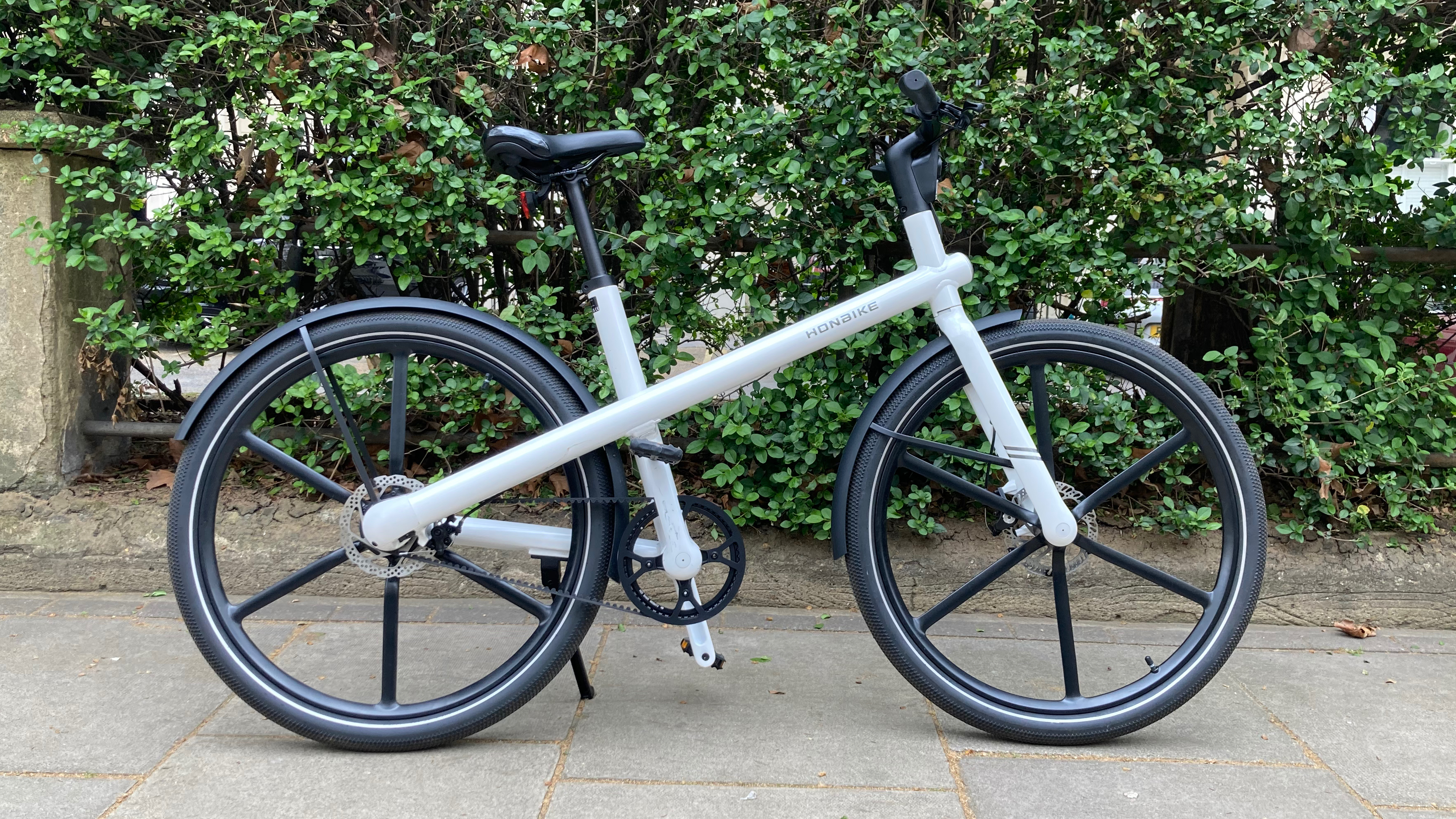
E-bikes are fantastic for getting around a city, but the initial outlay of four figures is off-putting. That’s why I greet budget options (albeit still in the lower four figures) like the Honbike Uni4 with delight, and hope they work well enough to make cycling with a minimum of effort accessible to more people.
On paper, the Honbike Uni4 looks like great value and it has received a number of five-star reviews. I was initially impressed, but once the odometer ticked into three figures I ran into problems with the battery. It’s a pity because the Uni4 was on track for a place in my selection of the best e-bikes, but there are more reliable budget options I can recommend (see below).
Honbike Uni4 E-Bike: Price And Availability
The Honbike Uni 4 is available direct from Honbike and costs $1,799 in the US and £1,699 in the UK. The only third-party retailer I found that sold the Uni4 is Wellbots.
Design
The Uni4 has a strikingly-designed frame. The vertical seatpost, front fork and head tube are joined by a horizontal J shape that starts at the headtube, runs past the seatpost and then appears to thread through the motor in the rear wheel and finish at the bottom bracket. It’s swooping. It’s elegant. But it has its downsides.
I was concerned that the lack of separate down tube and top tube reduces the ways to attach a bike lock. The bike anchor in my back garden is at top tube height, which posed a problem when trying to secure this expensive bit of kit. The frame also has a wider-than-usual diameter, which meant I was unable to use my smaller D-lock.
A minor issue is that the combined top and down tube isn’t aligned with the center of the bike because it comes out either side of the rear wheel. For the first few days I was convinced I hadn’t aligned the handlebars correctly, but it’s just that the crossbar sits at a slight diagonal. Even now I can’t shake the sense that the handlebars are out of alignment.
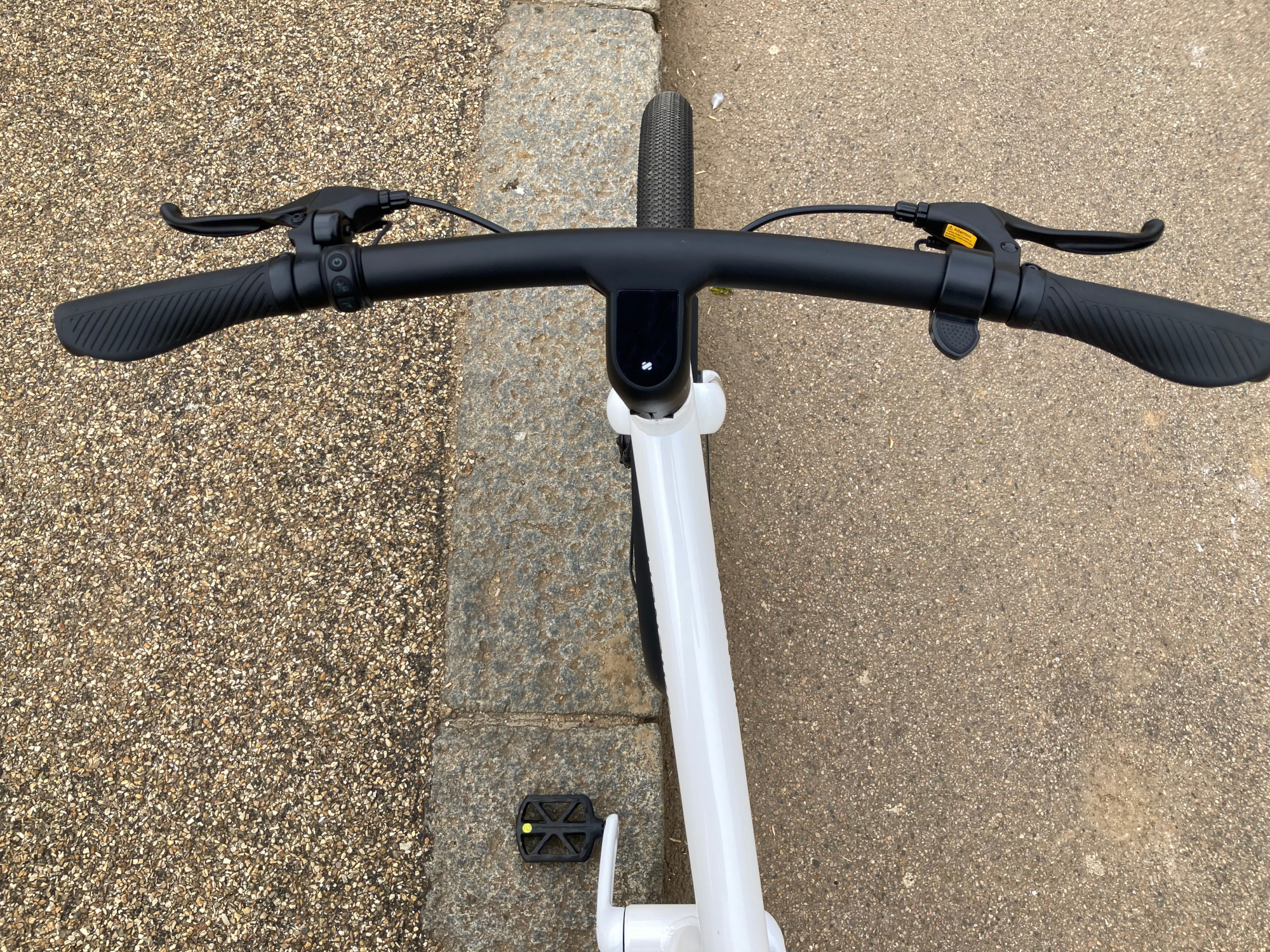
There are other elements I got on better with. The controls on the handlebars are well-designed, with a three-button set-up by the left grip and a throttle on the right. They’re easy to find and operate with cycling gloves on. The same goes for the bell, conveniently placed for the left index finger, and which was loud enough to raise a cheer from a picket line of teachers.
Another welcome design feature is the belt drive, which means no chain slips, no grease and less maintenance. Power transfer is not as efficient as it is with a chain, but the motor picks up the slack.
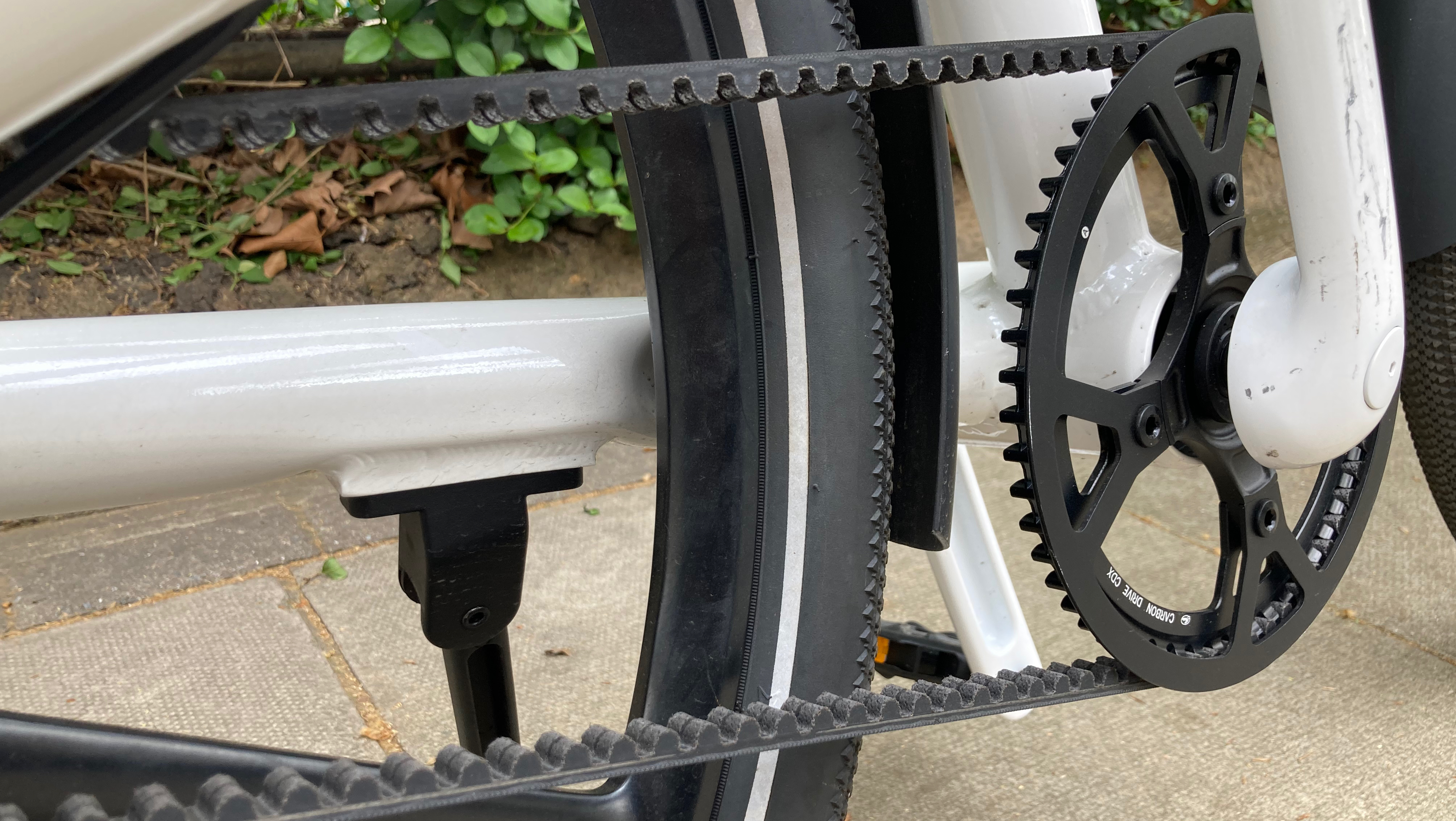
The bike weighs 44lb/20kg, which is in the expected range for budget e-bikes, though for many people it will be too heavy to pick up. That’s an issue because you can’t remove the battery, so you may need to pick up the bike to bring it inside to charge as I did. It was unwieldy, and a hassle to bring through my back door and charge overnight. The charging port is where the chainstay of the frame meets the rear wheel.
The Uni4 is available in one size. Honbike says it is suitable for people between 5ft 3in/160cm and 6ft 2in/190cm. In my experience that range feels too wide. I’m around 6ft/182cm tall and even with the seatpost and seat position at maximum extension I found the bike more cramped than my usual hybrid.
The Set-Up
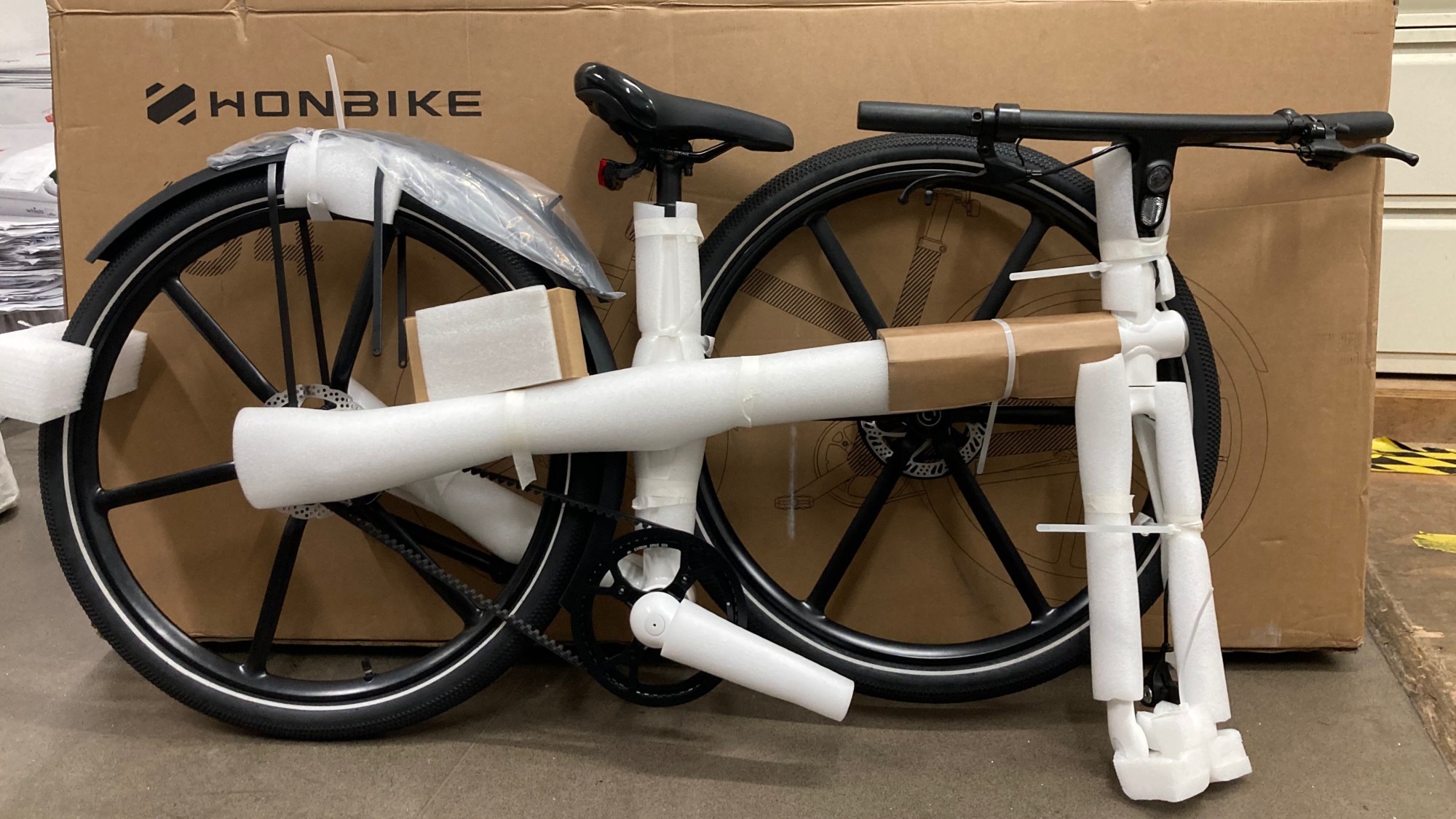
The bike is delivered with all the tools you need to get it started. The instructions specify the recommended tightening torques, which is good to have if you own a torque wrench but can feel surplus to requirements when using the included Allen keys.
The bike is relatively straightforward to assemble and the instruction manual is clearly written, so you won’t need to be familiar with putting a bike together. Attach the front mudguard, mount the front wheel, adjust the position of the right-hand brake, screw on the pedals and raise the saddle. Accounting for the time spent removing the cable ties and protective foam, attaching the mudguard the wrong way round (ahem) and long periods staring at the instructions, it took me about an hour.
How I Tested This Bike
I’ve ridden 144 miles/232.4km on the Honbike Uni4, using it for my eight-mile/13km each-way commute, as well as shorter trips. This is the 14th e-bike I have reviewed and, including test rides, I’ve ridden more than 20.
The Battery And Range
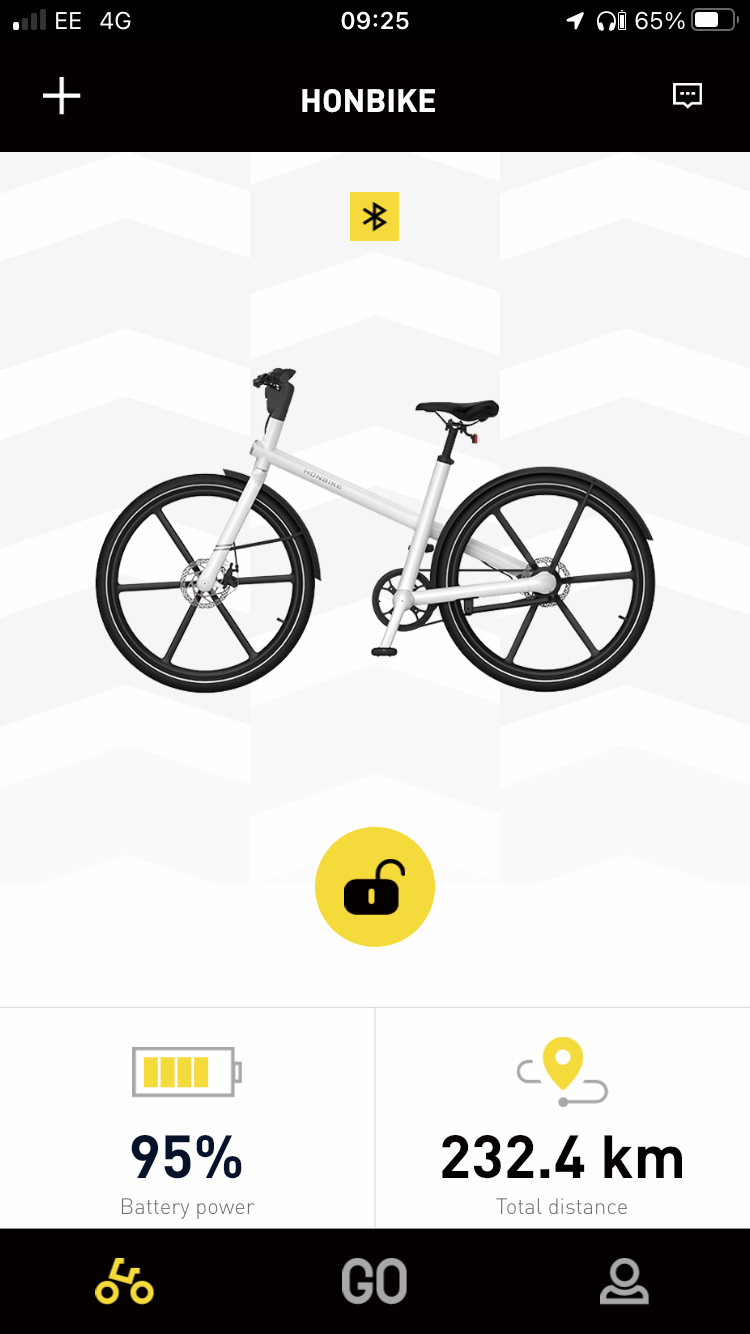
The Uni4’s given range is 62 miles/100km and this is standard among its rivals. The cheaper Raleigh Array, for instance, has a 60-mile/97km quoted range and the more expensive Volt London offers the same range as the Uni4. The Raleigh and Volt offerings are similarly heavy, weighing more than 45lb/20kg.
Using the highest assistance setting on each and along the same routes, I ran the Volt’s battery down in 41 miles/67km, while I ran the Honbike’s down in 34 miles/55km. In part that may be down to the carbon belt, but I have other concerns about the battery.
The first is that its performance became increasingly erratic, and the battery discharged more quickly the closer it was to empty. This is frustrating if you’re trying to judge if you have enough juice left to get you home, and was surprising given I received a new bike to test. The second concern was that the assistance tailed off as the battery approached zero. Even when there were two of the five bars left on the handlebar display, the assistance was notably diminished.
The Motor
The 250W motor—the maximum allowed in the UK—is mounted in the rear wheel, but the assistance it provides feels natural and not like you’re being propelled forward violently from behind, which I’ve found to be an issue on early and/or cheap e-bikes.
There are three levels of assistance and, in the highest setting, the assistance often had an on/off feel. Sometimes I’d push the pedal slightly and then stop pedaling, but a moment later the motor would give a push. This suggests the Uni4 uses a cadence rather than a torque sensor, using the turning of the pedals (rather than the force put through the pedals) as the trigger for the motor. A torque sensor is usually a feature of more expensive e-bikes as it helps to give a more natural feel to the assistance. However, for the most part, the Uni4 feels natural and I didn’t experience that ill-timed push on lower levels of assistance.
Honbike makes its uphill-assist a selling point and—battery issues notwithstanding—the Uni4 handled steep hills well. I found it wouldn’t keep you traveling at the maximum 15.5mph, but I’d find a speed around 12 or 13mph to settle in at and keep climbing with no more effort than I was putting in along the flat.
There is a throttle by the right handlebar grip that can be used to power the bike while walking it along, though I found the speed was much faster than I could walk.
The App
The Honbike app doesn’t offer much, but it’s easy to use and connects reliably to the bike via Bluetooth, so you can check the battery level and distance traveled. You can also lock the bike via the app, although as far as I can tell that just makes life more awkward for a thief—it does little to deter them in the first place.
The Ride
When everything is working well, the Uni4 delivers an easy, if relaxed, ride. It has the upright riding position of a hybrid bike. The assistance is significant but mostly feels natural, and I could get up to maximum speed or cruise up a hill using a comfortable cadence.
The 15.5mph limit where the assistance cuts out by UK law really was the upper limit unless I was on a downhill. The bike is heavy, the tires are wider than need be (although they can handle the crater-sized potholes in my neighborhood), it’s single-speed and the carbon belt doesn’t help matters either. All of that comes to the fore when the assistance from the motor winds down and the battery unexpectedly runs out. The bike’s still rideable, but only just.
Is The Honbike Uni4 Worth It?
Because of the issues with the battery and diminishing assistance, I recommend you steer clear of the Honbike Uni4. If you’re looking to spend as little money as possible I recommend the Raleigh Array. It’s heavy, but I found it cruised along pleasantly and the swept-back handlebars added to its relaxed feel. It also has a detachable battery and gears so you could push past 15.5mph should you feel like it.
The more expensive Volt London is similar to the Honbike and Raleigh but justifies its higher price by nailing the basics and adding on useful security features, like a key fob that locks and unlocks the bike.
Slightly more expensive again is the Ribble Hybrid AL e, and its distinguishing feature is how much lighter it is—30lb/13.5kg. You sacrifice range and the degree of assistance you can wring out of it, but it covers my daily commute and does the work of getting you going quickly and with a minimum of effort.







